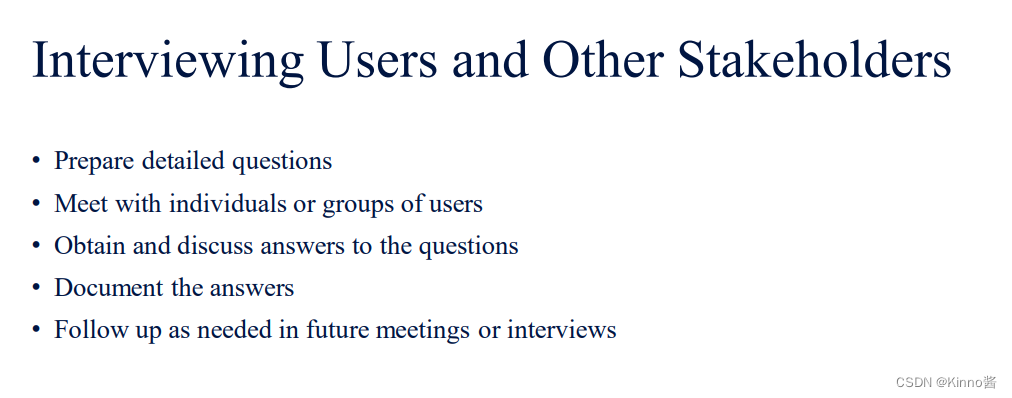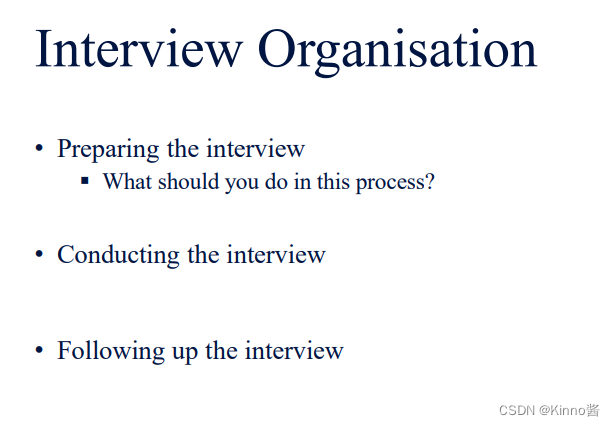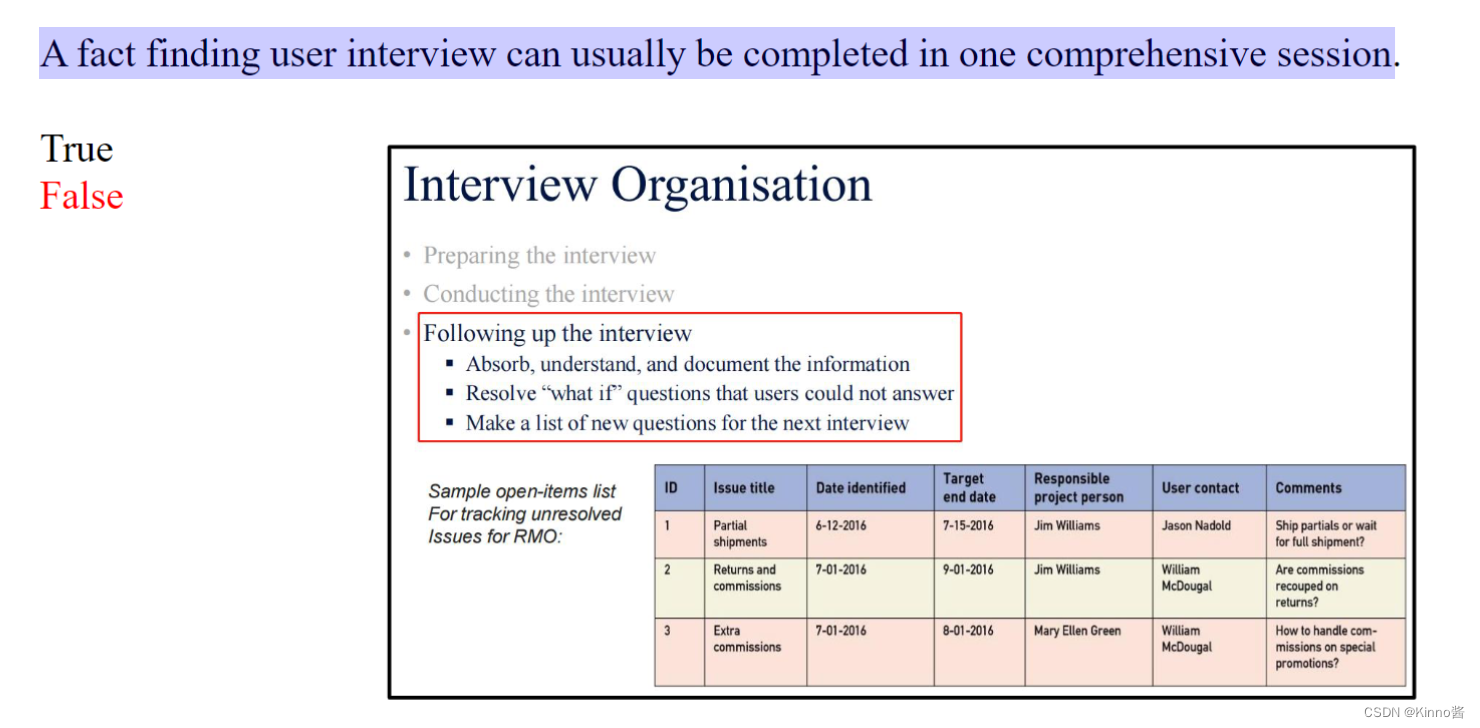Lecture 4
Part A: Information Gathering, Modelling and Workflows
重点:
gather information: interview, questionaire
Interview怎么做,步骤是什么,以及它需要注意的点是什么
interview问题类型
interview: 阶段,准备,进行,之后的事情,里面相关的步骤,用自己的思路来记忆,不要死记硬背
questionaire(另外一种information gathering 方法)怎么做,步骤是什么,以及它需要注意的点是什么
interview和questionnaire的区别和联系,什么情况下用interview,什么情况下用questionaire
建模
Activity diagram 一定要会画
Information-Gathering Techniques
An overview:
- Interviewing users and other stakeholders
- Distributing and collecting questionnaires
- Reviewing inputs, outputs, and procedures
- Observing and documenting business processes
- Researching vendor solutions
- Collecting active user comments and suggestions

所以要有interview和questionaire的流程
Interview怎么做,步骤是什么,以及它需要注意的点是什么

Question Types:
• Open-ended questions 开放性问题
“How do you do this function?”—encourage discussion and explanation.
• Closed-ended questions
“How many forms a day do you process?”— to get specific facts.
Interview Organisation interview分几个阶段进行,以及每个里面相关的步骤,(上课讲过应该以什么样的思路/)

• Preparing the interview 准备: What should you do in this process?
• Conducting the interview 进行: What aspects should you consider/suggest to have a good interview
• Following up the interview 之后:


put on an open-items list 列入开放项目表

Asking many detailed, probing questions during an initial interview usually _______.
ANS: is necessary to under





 本文讨论了信息收集的不同方法,包括面试和问卷调查的步骤、注意事项及适用场景。面试涉及准备、执行和后续跟进,而问卷调查则侧重于设计和数据收集。建模是将收集到的信息转化为图形、文本和数学模型的过程,以简化复杂性。此外,文章还介绍了项目范围管理,包括需求收集、范围定义、验证和控制。活动图是建模中的一个重要工具,用于表示业务流程。
本文讨论了信息收集的不同方法,包括面试和问卷调查的步骤、注意事项及适用场景。面试涉及准备、执行和后续跟进,而问卷调查则侧重于设计和数据收集。建模是将收集到的信息转化为图形、文本和数学模型的过程,以简化复杂性。此外,文章还介绍了项目范围管理,包括需求收集、范围定义、验证和控制。活动图是建模中的一个重要工具,用于表示业务流程。
 最低0.47元/天 解锁文章
最低0.47元/天 解锁文章


















 被折叠的 条评论
为什么被折叠?
被折叠的 条评论
为什么被折叠?








